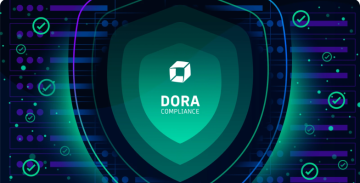
What are DISA STIGs?
The Defense Information Systems Agency (DISA) Security Technical Implementation Guide (STIG) is a framework of security protocols designed to safeguard the U.S. Department of Defense (DoD) systems and networks from cybersecurity threats.
STIGs establish cybersecurity requirements for configuring IT systems, software, hardware, and network components to minimize vulnerabilities and improve security. These guides are mandatory for any system that operates within the DoD Information Network (DoDIN), as well as DoD contractors' systems. They're also adopted by defense contractors, federal agencies, and various private organizations aiming to align their security practices with the DoD.
How DISA STIGs work
STIGs function as detailed checklists guiding administrators in securely configuring IT assets. They cover a range of products and systems, including operating systems, databases, applications, and network devices. Each STIG specifies security controls and benchmarks necessary for compliance. For example, STIGs for operating systems may include guidelines for managing file permissions, configuring services, and applying security patches.
Implementing STIGs typically involves downloading the relevant documents, available in PDF and XML formats, reviewing them, and configuring systems according to the outlined security measures. Tools such as the STIG Viewer and automated compliance checkers can help by analyzing systems to ensure they meet the required standards.
Understanding the compliance categories
STIG compliance is categorized based on the severity of vulnerabilities.
Category I (CAT I)
These are critical vulnerabilities that pose immediate risks to a system's confidentiality, integrity, or availability. Failing to address CAT I vulnerabilities can result in severe consequences, such as unauthorized access to classified information or denial of service attacks, potentially resulting in mission failure or loss of life.
Category II (CAT II)
These vulnerabilities are significant but less severe than CAT I. If left unresolved, they can result in security breaches or system degradation, potentially escalating to CAT I vulnerabilities.
Category III (CAT III)
These are the least severe vulnerabilities but still weaken the system's overall security posture. Ignoring CAT III vulnerabilities can complicate recovery processes and degrade data accuracy, potentially leading to more significant issues over time.
Benefits of using DISA STIGs
Adherence to STIG compliance offers multiple benefits, including the following:
Strengthened security
Following DISA STIGs enhances the security posture by enforcing standardized security configurations across systems and devices, preventing unauthorized access and data breaches. For DoD agencies and contractors, compliance is not only beneficial but also mandatory, ensuring consistent protection against threats.
System resilience
STIG compliance improves IT systems' reliability and resilience by addressing vulnerabilities before exploitation, reducing the risk of outages, data loss, and operational disruptions.
Potential drawbacks of DISA STIGs
Despite their benefits, DISA STIGs pose certain challenges.
Time-intensive compliance maintenance
Achieving and maintaining continuous compliance is complex and time-consuming. Each STIG can contain numerous specific controls, requiring considerable effort from IT teams. Moreover, frequent updates, released quarterly, demand ongoing vigilance to ensure systems remain compliant at any point in time.
Impact on functionality
Prioritizing security in STIGs can sometimes compromise system usability or performance, especially when default configurations are altered to meet security requirements. This can potentially limit system or application features.
Use cases and implementation
While STIGs are used extensively within the DoD, their applicability extends to any organization that prioritizes security, including private companies and international entities. Defense contractors, for example, must adhere to relevant STIGs as part of their service-level agreements with the DoD. Similarly, sectors that deal with sensitive data (such as finance and healthcare) may adopt STIGs to enhance their cybersecurity frameworks.
Implementing STIGs typically involves identifying relevant STIGs for the systems in use before deploying test environments to ensure STIG controls don’t disrupt operations. Automation tools can then streamline the compliance process, allowing for continuous monitoring against the compliance criteria and quick remediation of any violation that arises.
Getting started with DISA STIGs
The following steps can help organizations get started with DISA STIG compliance:
Understand the requirements
Identify applicable STIGs for your environment based on systems and software. Access the latest STIGs via resources such as the DoD Cyber Exchange.
Download and review current state of STIGs compliance
Download and review the relevant STIGs for detailed securing instructions. Tools such as the STIG Viewer assist in managing this process. Dynatrace automation can also review current configurations and provide a fit gap analysis and remediation guidance for non-compliant objects.
Test in a controlled environment
Before applying STIGs to live systems, implement them in a test environment to avoid disruptions. This step helps identify potential conflicts or performance issues.
Automate compliance
Use automation solutions like Dynatrace to monitor and continuously maintain STIG compliance. Automation simplifies continuous compliance by providing details about compliant and noncompliant configurations, providing remediation guidance and evidence of applied corrections.
Monitor continuously
Compliance is not a single event, but continuous commitment and regular monitoring ensures ongoing audit-readiness. Use automation to check systems against STIGs and alert teams to deviations.
Document compliance
Keep detailed records of compliance efforts. Proper documentation is essential for audits and future compliance checks.
Implementing DISA STIG compliance with Dynatrace
DISA STIGs are pivotal in US defense cybersecurity, offering a rigorous and standardized approach to securing IT systems. While achieving STIG compliance can be demanding, the security benefits make it crucial for organizations operating within or alongside the DoD.
By understanding STIG requirements, categories, and implementation strategies, organizations can better protect their assets and align with top cybersecurity standards. Collaborating with partners who understand observability, compliance, and often complex regulations can help reach these higher security standards.
Dynatrace supports organizations in achieving and maintaining DISA STIG compliance through automated, AI-driven monitoring and management of IT environments. Dynatrace provides comprehensive observability across the entire application stack, including infrastructure, applications, and microservices, which is essential for ensuring all elements comply with STIG requirements. The platform’s real-time monitoring capabilities can detect deviations from STIG configurations, alerting teams to potential vulnerabilities before they escalate into more significant security risks.
To support ongoing compliance commitments, Dynatrace provides a solution for out-of-the-box policies for DISA STIG, reducing the manual effort and time needed to maintain audit readiness and continuous compliance across SecOps, platform engineers, and compliance teams.
AI-driven insights help prioritize remediation efforts by highlighting the most critical compliance issues, allowing IT teams to address high-severity vulnerabilities quickly. The platform integrates with existing security tools to provide a holistic approach to managing security configurations and maintaining STIG compliance across complex, dynamic environments. This capability is particularly valuable for organizations that must meet stringent DoD security requirements while maintaining operational efficiency.
Keep reading
 eBookThe next generation of cloud application security
eBookThe next generation of cloud application security CISO ReportThe need to innovate faster and shift to cloud-native application architectures isn’t just driving complexity, it’s creating significant vulnerability blind spots.
CISO ReportThe need to innovate faster and shift to cloud-native application architectures isn’t just driving complexity, it’s creating significant vulnerability blind spots. BlogTaming DORA compliance with AI, observability, and security
BlogTaming DORA compliance with AI, observability, and security
Use continuous security posture management to keep systems compliant.